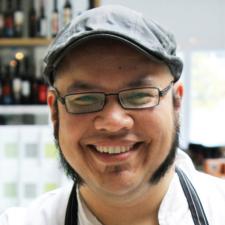
Morbier cheese, for example, was originally developed with a thin line of ash running horizontally through its middle because it served as a kind of bug repellent during cheesemaking. Back in the 19th century, Morbier was made in two phases over the course of 24 hours (not in one process as is done today). The curds for the cheese were created twice daily, following each milking. To protect the evening curds in their half-filled molds from insects, the cheesemaker dusted the exposed surface with ash. The next morning, another layer of curds from the morning milk was added atop, hence the dividing line of ash. Even though the ash is no longer needed to make Morbier, its striking dark midline makes it immediately identifiable, so the sprinkle of ash between two layers continues.
In myriad little goat cheeses, an ash coating actually grants the surface of the cheese a more hospitable environment for the desired mold growth and rind formation. As an alkaline agent, ash also helps neutralize acidity so its usage can allow a cheesemaker to find a desired balance with acidity to age the cheese to a specific profile. So while the virtually flavorless ash itself isn’t a direct contributor to the taste or texture of a cheese, it does have an effect overall.
That said, what you probably notice most is that ash adds a striking appearance, in contrast to the light-colored paste of most cheeses, whether it is used to coat the cheese or runs through the middle in a delicate stripe. On a cheese plate these two-toned beauties always make for a great presentation.





3 thoughts on “Why Are Some Cheeses Coated in Ash?”